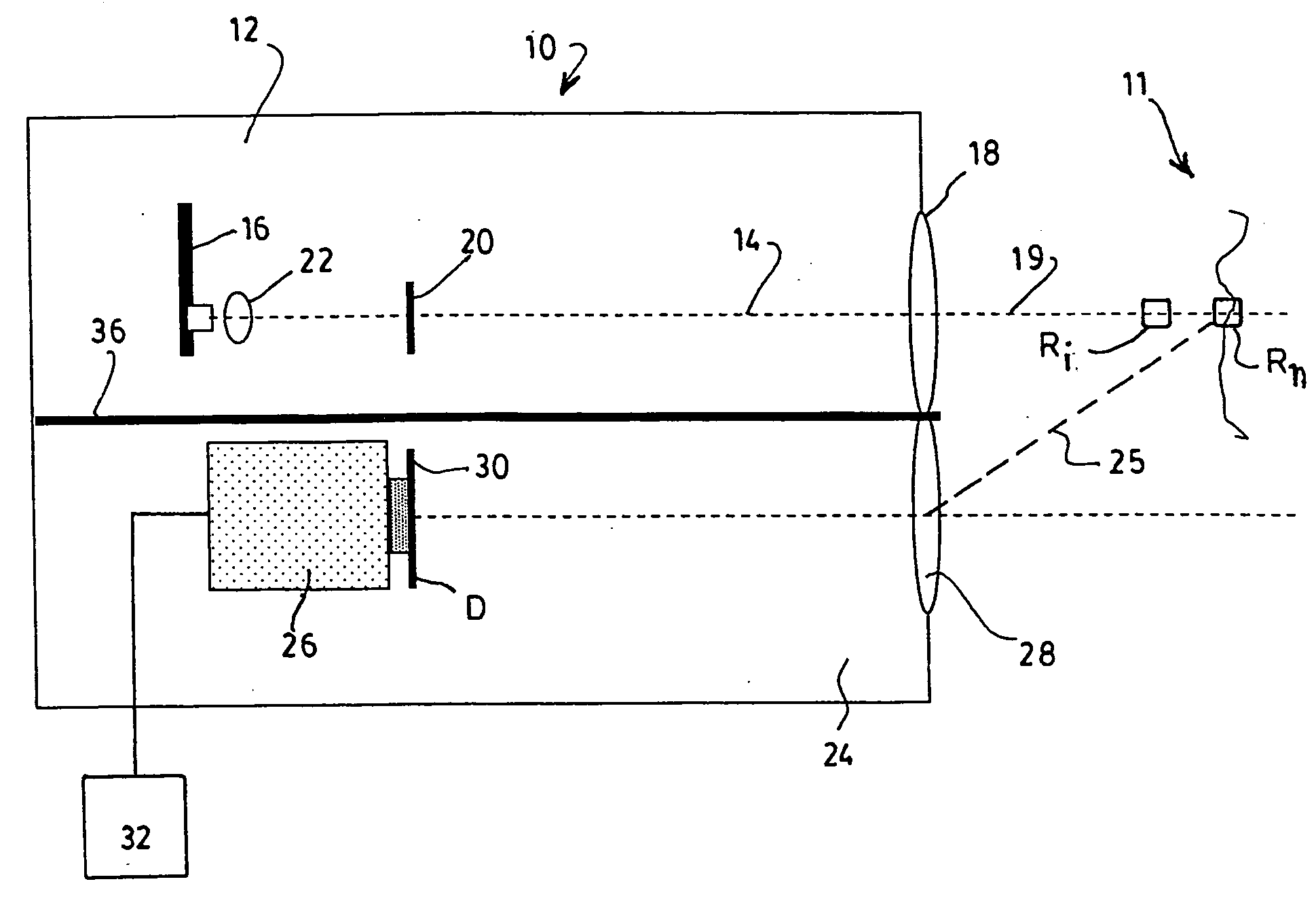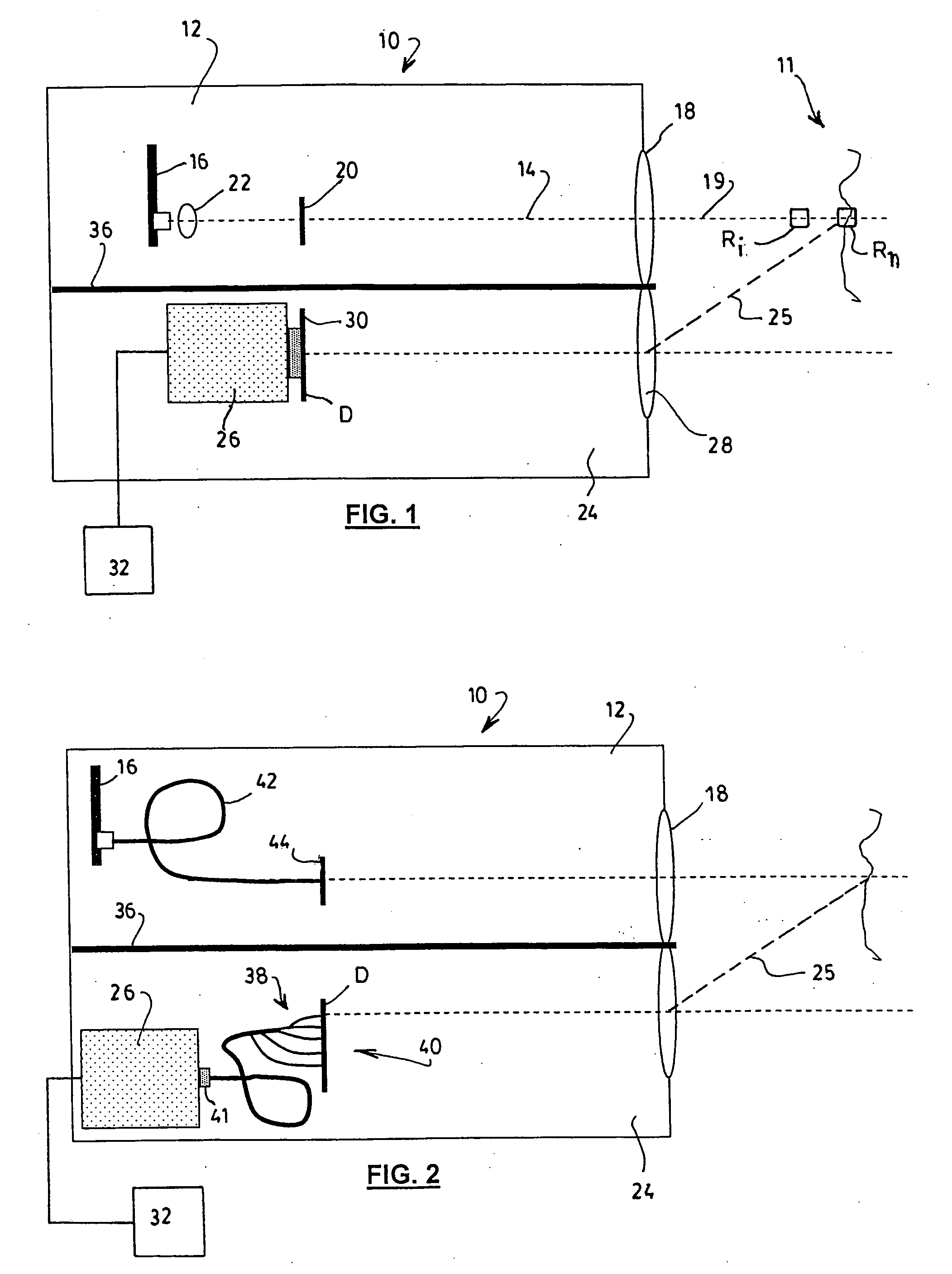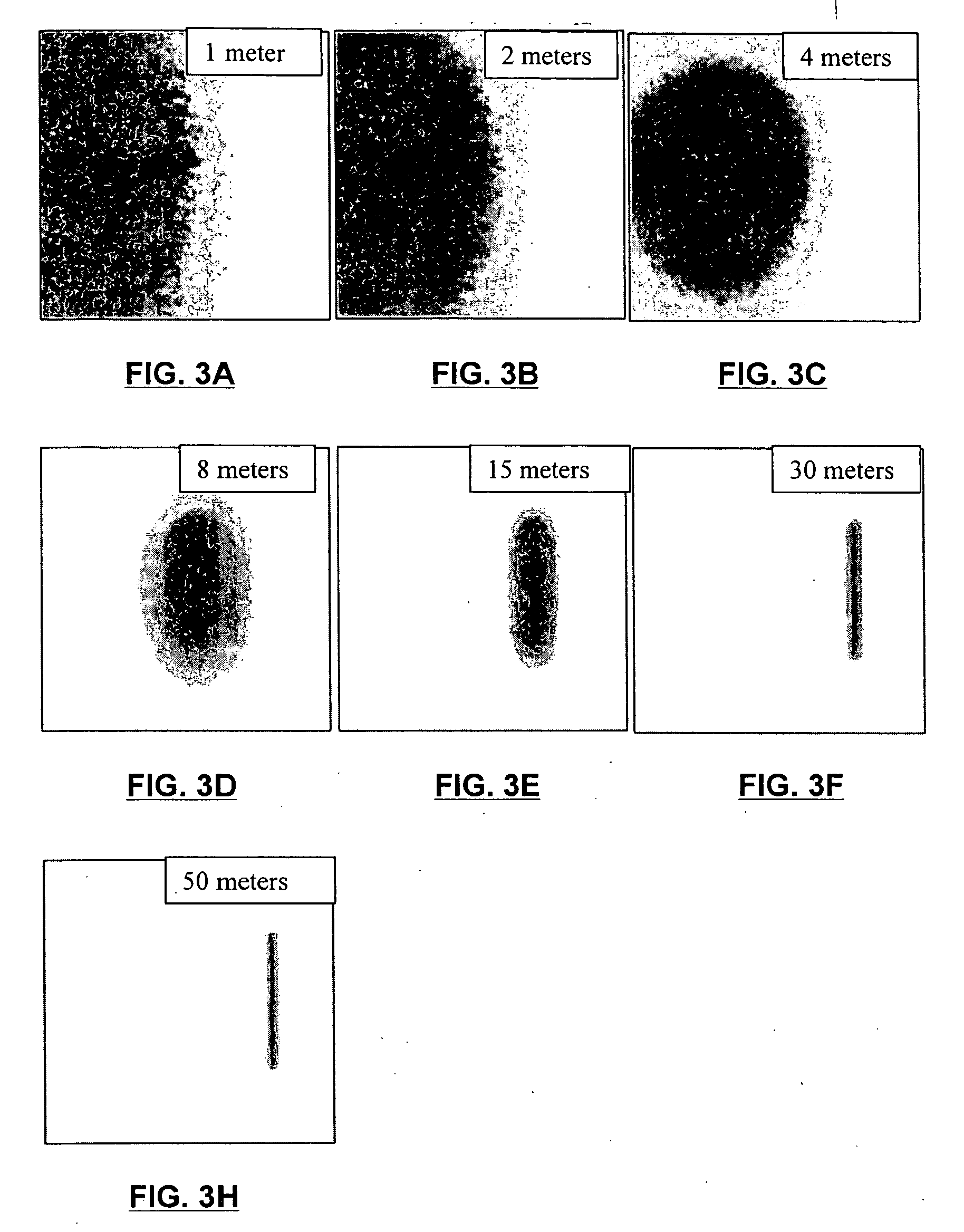Short range lidar apparatus having a flat spatial response
a spatial response and lidar technology, applied in the field of optical measuring devices, can solve the problems of limited temporal resolution, unoptimized, and the 1/rsup>2 /sup>dependence of the signal, and achieve the effect of flattening the spatial response of the apparatus
- Summary
- Abstract
- Description
- Claims
- Application Information
AI Technical Summary
Benefits of technology
Problems solved by technology
Method used
Image
Examples
Embodiment Construction
[0028] Referring to FIG. 1, there is schematically illustrated a LIDAR apparatus 10 having an almost flat spatial response according to a preferred embodiment of the present invention.
[0029] The apparatus is intended for measuring, at short range, concentrations of particles 11 in the air such as aerosols, fog, dust, clouds of chemical droplets such as pesticides, insecticides or the like, or suspensions in a liquid medium, for example in the course of analyzing the turbidity of water in waste water settling tanks.
[0030] The term “range” is used herein as referring to the distance between the detected particles 11 and the apparatus 10 itself. It is understood that the designation of “short range” for the apparatus 10 of the invention is by comparison to traditional aerosol detecting LIDAR devices, which are designed to operate at a range of about 200 m or more; in the preferred embodiments, the apparatus 10 is designed to be operated within 100 m, preferably within 50 m. It will o...
PUM
| Property | Measurement | Unit |
|---|---|---|
| diameters | aaaaa | aaaaa |
| distances | aaaaa | aaaaa |
| distance | aaaaa | aaaaa |
Abstract
Description
Claims
Application Information
 Login to View More
Login to View More - R&D
- Intellectual Property
- Life Sciences
- Materials
- Tech Scout
- Unparalleled Data Quality
- Higher Quality Content
- 60% Fewer Hallucinations
Browse by: Latest US Patents, China's latest patents, Technical Efficacy Thesaurus, Application Domain, Technology Topic, Popular Technical Reports.
© 2025 PatSnap. All rights reserved.Legal|Privacy policy|Modern Slavery Act Transparency Statement|Sitemap|About US| Contact US: help@patsnap.com



